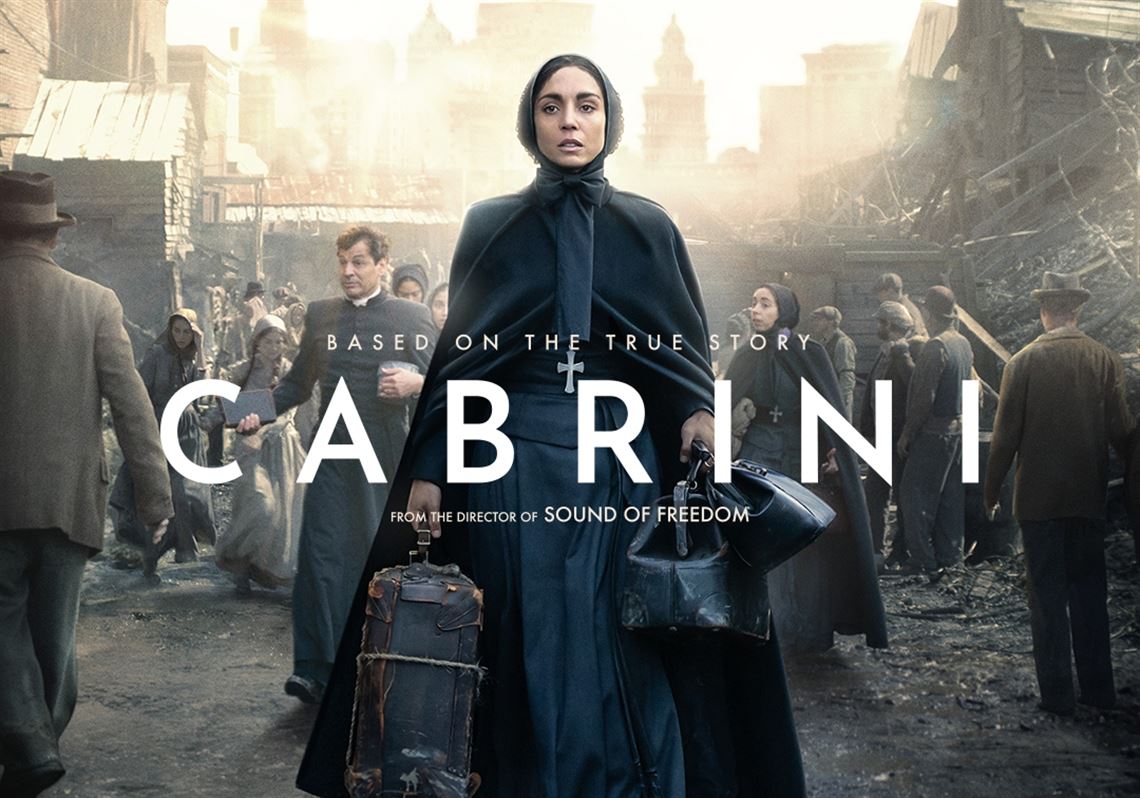On March 8th, “Cabrini” premiered in theaters for International Women’s Day. This cinematic masterpiece is based on the true story of Mother Cabrini; the first United States citizen to be canonized a saint by the Catholic Church.
An Italian woman who courageously fought with every strength she had left, as her post-tuberculosis prognosis was threatening her existence, to build an empire of hope for the Italian immigrants in New York City.
Although the story is powerful, the way that it was staged, performed, shot, and edited make it one of a kind and worth watching more than once. Its high-caliber innovative shots might even sometimes lead the viewer to forget that there is a story being told throughout.
The portrayal in “Cabrini” of a worthy feminism depicted in the last line of the film, is precious. Mayor Gould says, “It’s a shame that you’re a woman, mother. You would have made an excellent man.” And Cabrini says: “Oh no, Mr. Mayor, men could never do what we do.” The Newman Catholic Club at Queens College, approximately 15 students, went together to watch this film distributed by Angel Studios on March 8th and 9th. Madeline Liu, the President of the club, spoke to The Knight News about this experience.
“I feel like most secular films like to villainize or demonize nuns. However, this film shows a side of The Catholic Church that people nowadays tend to forget. Really, this idea of human dignity and equality is a Christian idea, and The Church was one of the first proponents of this idea.”
Many may have given up at the first encounter of only one of the struggles that Mother Cabrini (Cristiana Dell’Anna) faced as she arrived in New York in 1889. In many aspects it was an impossible mission to be accomplished, but her faith endured through every struggle she faced. In regards to her perseverance she taught us that, “We can serve our weakness, or we can serve our purpose. Not both.”
Some components of the film that kept viewers engaged was the diegetic and non-diegetic sound, including the voice over, the effects, and music score. Nevertheless, the most outstanding and crucial part was the Mise-en-scène that was staged. Every little detail in regards to set design, lighting, costumes, and props achieved the look and feeling of the 1800s. Sara Quiceno, a graduate student mastering in Biology, spoke to The Knight News and said, “What I found the most outstanding in the film was how well portrayed the era was, taking into account its supposed to be in the 1880s.”
One thing that was particular in this film, which made it captivating and amusing to watch, was the way the transitions between scenes were crafted.
Ellipsis is a film element often used by filmmakers, but director Alejandro Gómez Monteverde, creatively strategized its use. A continuous long shot is simulated by changing the camera angle (panning/tilting) or camera position movement (pedestal/tracking). As the camera is covered by a wall or the ceiling, it keeps moving past it to the next scene taking place in the same location but days or months later.
The uses of shadows contrasting light and darkness gave the film a precious and pleasant view, but aside from the external experience, it allows the viewer to forget that the story is about those people from hundreds of years ago. Through the silhouette of the characters, the viewer is impacted by being given a chance to see themselves in the story.
“Cabrini” provides the viewer a closeness to the characters by choosing to shoot mostly close-ups and slow zooms ins and outs to transition to establishing shots. At the end of the film, images of the real Cabrini and the other sisters are shown and we learn they founded hundreds of hospitals, orphanages, schools, and aid centers all around the world. She built the largest charitable empire the world had ever known.
One of the most inspiring quotes Cabrini said is, “When I’m away, learn to face your fears. Not just to carry on, but to lead and demonstrate you can do all things — all things in Him who strengthens us. Whether I am here or not.”











